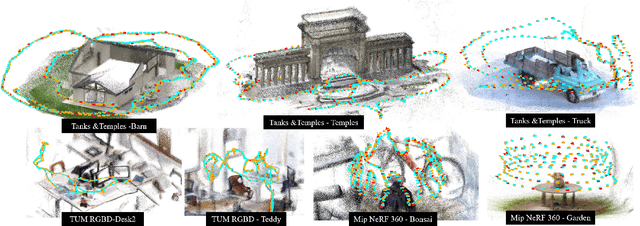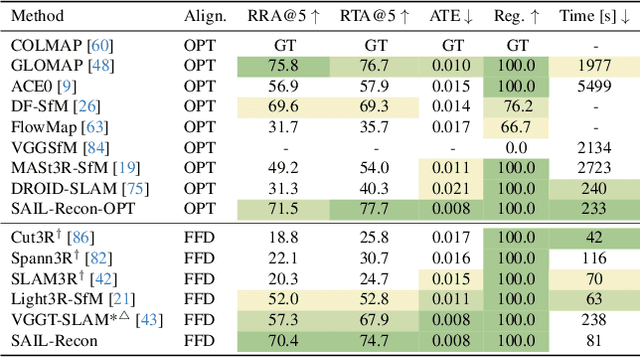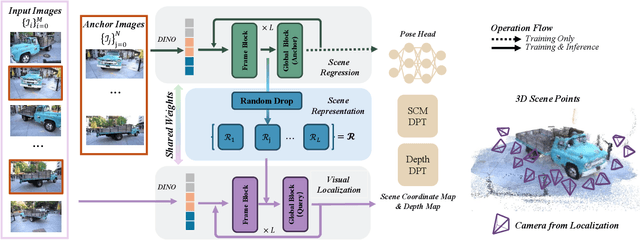Tao Xie
AppForge: From Assistant to Independent Developer - Are GPTs Ready for Software Development?
Oct 09, 2025



Abstract:Large language models (LLMs) have demonstrated remarkable capability in function-level code generation tasks. Unlike isolated functions, real-world applications demand reasoning over the entire software system: developers must orchestrate how different components interact, maintain consistency across states over time, and ensure the application behaves correctly within the lifecycle and framework constraints. Yet, no existing benchmark adequately evaluates whether LLMs can bridge this gap and construct entire software systems from scratch. To address this gap, we propose APPFORGE, a benchmark consisting of 101 software development problems drawn from real-world Android apps. Given a natural language specification detailing the app functionality, a language model is tasked with implementing the functionality into an Android app from scratch. Developing an Android app from scratch requires understanding and coordinating app states, lifecycle management, and asynchronous operations, calling for LLMs to generate context-aware, robust, and maintainable code. To construct APPFORGE, we design a multi-agent system to automatically summarize the main functionalities from app documents and navigate the app to synthesize test cases validating the functional correctness of app implementation. Following rigorous manual verification by Android development experts, APPFORGE incorporates the test cases within an automated evaluation framework that enables reproducible assessment without human intervention, making it easily adoptable for future research. Our evaluation on 12 flagship LLMs show that all evaluated models achieve low effectiveness, with the best-performing model (GPT-5) developing only 18.8% functionally correct applications, highlighting fundamental limitations in current models' ability to handle complex, multi-component software engineering challenges.
SAIL-Recon: Large SfM by Augmenting Scene Regression with Localization
Aug 25, 2025



Abstract:Scene regression methods, such as VGGT, solve the Structure-from-Motion (SfM) problem by directly regressing camera poses and 3D scene structures from input images. They demonstrate impressive performance in handling images under extreme viewpoint changes. However, these methods struggle to handle a large number of input images. To address this problem, we introduce SAIL-Recon, a feed-forward Transformer for large scale SfM, by augmenting the scene regression network with visual localization capabilities. Specifically, our method first computes a neural scene representation from a subset of anchor images. The regression network is then fine-tuned to reconstruct all input images conditioned on this neural scene representation. Comprehensive experiments show that our method not only scales efficiently to large-scale scenes, but also achieves state-of-the-art results on both camera pose estimation and novel view synthesis benchmarks, including TUM-RGBD, CO3Dv2, and Tanks & Temples. We will publish our model and code. Code and models are publicly available at: https://hkust-sail.github.io/ sail-recon/.
Diffuman4D: 4D Consistent Human View Synthesis from Sparse-View Videos with Spatio-Temporal Diffusion Models
Jul 17, 2025Abstract:This paper addresses the challenge of high-fidelity view synthesis of humans with sparse-view videos as input. Previous methods solve the issue of insufficient observation by leveraging 4D diffusion models to generate videos at novel viewpoints. However, the generated videos from these models often lack spatio-temporal consistency, thus degrading view synthesis quality. In this paper, we propose a novel sliding iterative denoising process to enhance the spatio-temporal consistency of the 4D diffusion model. Specifically, we define a latent grid in which each latent encodes the image, camera pose, and human pose for a certain viewpoint and timestamp, then alternately denoising the latent grid along spatial and temporal dimensions with a sliding window, and finally decode the videos at target viewpoints from the corresponding denoised latents. Through the iterative sliding, information flows sufficiently across the latent grid, allowing the diffusion model to obtain a large receptive field and thus enhance the 4D consistency of the output, while making the GPU memory consumption affordable. The experiments on the DNA-Rendering and ActorsHQ datasets demonstrate that our method is able to synthesize high-quality and consistent novel-view videos and significantly outperforms the existing approaches. See our project page for interactive demos and video results: https://diffuman4d.github.io/ .
LLIA -- Enabling Low-Latency Interactive Avatars: Real-Time Audio-Driven Portrait Video Generation with Diffusion Models
Jun 06, 2025Abstract:Diffusion-based models have gained wide adoption in the virtual human generation due to their outstanding expressiveness. However, their substantial computational requirements have constrained their deployment in real-time interactive avatar applications, where stringent speed, latency, and duration requirements are paramount. We present a novel audio-driven portrait video generation framework based on the diffusion model to address these challenges. Firstly, we propose robust variable-length video generation to reduce the minimum time required to generate the initial video clip or state transitions, which significantly enhances the user experience. Secondly, we propose a consistency model training strategy for Audio-Image-to-Video to ensure real-time performance, enabling a fast few-step generation. Model quantization and pipeline parallelism are further employed to accelerate the inference speed. To mitigate the stability loss incurred by the diffusion process and model quantization, we introduce a new inference strategy tailored for long-duration video generation. These methods ensure real-time performance and low latency while maintaining high-fidelity output. Thirdly, we incorporate class labels as a conditional input to seamlessly switch between speaking, listening, and idle states. Lastly, we design a novel mechanism for fine-grained facial expression control to exploit our model's inherent capacity. Extensive experiments demonstrate that our approach achieves low-latency, fluid, and authentic two-way communication. On an NVIDIA RTX 4090D, our model achieves a maximum of 78 FPS at a resolution of 384x384 and 45 FPS at a resolution of 512x512, with an initial video generation latency of 140 ms and 215 ms, respectively.
CRAFT: Time Series Forecasting with Cross-Future Behavior Awareness
May 20, 2025Abstract:The past decades witness the significant advancements in time series forecasting (TSF) across various real-world domains, including e-commerce and disease spread prediction. However, TSF is usually constrained by the uncertainty dilemma of predicting future data with limited past observations. To settle this question, we explore the use of Cross-Future Behavior (CFB) in TSF, which occurs before the current time but takes effect in the future. We leverage CFB features and propose the CRoss-Future Behavior Awareness based Time Series Forecasting method (CRAFT). The core idea of CRAFT is to utilize the trend of cross-future behavior to mine the trend of time series data to be predicted. Specifically, to settle the sparse and partial flaws of cross-future behavior, CRAFT employs the Koopman Predictor Module to extract the key trend and the Internal Trend Mining Module to supplement the unknown area of the cross-future behavior matrix. Then, we introduce the External Trend Guide Module with a hierarchical structure to acquire more representative trends from higher levels. Finally, we apply the demand-constrained loss to calibrate the distribution deviation of prediction results. We conduct experiments on real-world dataset. Experiments on both offline large-scale dataset and online A/B test demonstrate the effectiveness of CRAFT. Our dataset and code is available at https://github.com/CRAFTinTSF/CRAFT.
Multi-view Reconstruction via SfM-guided Monocular Depth Estimation
Mar 18, 2025Abstract:In this paper, we present a new method for multi-view geometric reconstruction. In recent years, large vision models have rapidly developed, performing excellently across various tasks and demonstrating remarkable generalization capabilities. Some works use large vision models for monocular depth estimation, which have been applied to facilitate multi-view reconstruction tasks in an indirect manner. Due to the ambiguity of the monocular depth estimation task, the estimated depth values are usually not accurate enough, limiting their utility in aiding multi-view reconstruction. We propose to incorporate SfM information, a strong multi-view prior, into the depth estimation process, thus enhancing the quality of depth prediction and enabling their direct application in multi-view geometric reconstruction. Experimental results on public real-world datasets show that our method significantly improves the quality of depth estimation compared to previous monocular depth estimation works. Additionally, we evaluate the reconstruction quality of our approach in various types of scenes including indoor, streetscape, and aerial views, surpassing state-of-the-art MVS methods. The code and supplementary materials are available at https://zju3dv.github.io/murre/ .
Recent Advances in Large Langauge Model Benchmarks against Data Contamination: From Static to Dynamic Evaluation
Feb 23, 2025Abstract:Data contamination has received increasing attention in the era of large language models (LLMs) due to their reliance on vast Internet-derived training corpora. To mitigate the risk of potential data contamination, LLM benchmarking has undergone a transformation from static to dynamic benchmarking. In this work, we conduct an in-depth analysis of existing static to dynamic benchmarking methods aimed at reducing data contamination risks. We first examine methods that enhance static benchmarks and identify their inherent limitations. We then highlight a critical gap-the lack of standardized criteria for evaluating dynamic benchmarks. Based on this observation, we propose a series of optimal design principles for dynamic benchmarking and analyze the limitations of existing dynamic benchmarks. This survey provides a concise yet comprehensive overview of recent advancements in data contamination research, offering valuable insights and a clear guide for future research efforts. We maintain a GitHub repository to continuously collect both static and dynamic benchmarking methods for LLMs. The repository can be found at this link.
Data and System Perspectives of Sustainable Artificial Intelligence
Jan 13, 2025Abstract:Sustainable AI is a subfield of AI for concerning developing and using AI systems in ways of aiming to reduce environmental impact and achieve sustainability. Sustainable AI is increasingly important given that training of and inference with AI models such as large langrage models are consuming a large amount of computing power. In this article, we discuss current issues, opportunities and example solutions for addressing these issues, and future challenges to tackle, from the data and system perspectives, related to data acquisition, data processing, and AI model training and inference.
EnvGS: Modeling View-Dependent Appearance with Environment Gaussian
Dec 19, 2024



Abstract:Reconstructing complex reflections in real-world scenes from 2D images is essential for achieving photorealistic novel view synthesis. Existing methods that utilize environment maps to model reflections from distant lighting often struggle with high-frequency reflection details and fail to account for near-field reflections. In this work, we introduce EnvGS, a novel approach that employs a set of Gaussian primitives as an explicit 3D representation for capturing reflections of environments. These environment Gaussian primitives are incorporated with base Gaussian primitives to model the appearance of the whole scene. To efficiently render these environment Gaussian primitives, we developed a ray-tracing-based renderer that leverages the GPU's RT core for fast rendering. This allows us to jointly optimize our model for high-quality reconstruction while maintaining real-time rendering speeds. Results from multiple real-world and synthetic datasets demonstrate that our method produces significantly more detailed reflections, achieving the best rendering quality in real-time novel view synthesis.
Automated Proof Generation for Rust Code via Self-Evolution
Oct 21, 2024



Abstract:Ensuring correctness is crucial for code generation. Formal verification offers a definitive assurance of correctness, but demands substantial human effort in proof construction and hence raises a pressing need for automation. The primary obstacle lies in the severe lack of data - there is much less proof than code for LLMs to train upon. In this paper, we introduce SAFE, a novel framework that overcomes the lack of human-written proof to enable automated proof generation of Rust code. SAFE establishes a self-evolving cycle where data synthesis and fine-tuning collaborate to enhance the model capability, leveraging the definitive power of a symbolic verifier in telling correct proof from incorrect ones. SAFE also re-purposes the large number of synthesized incorrect proofs to train the self-debugging capability of the fine-tuned models, empowering them to fix incorrect proofs based on the verifier's feedback. SAFE demonstrates superior efficiency and precision compared to GPT-4o. Through tens of thousands of synthesized proofs and the self-debugging mechanism, we improve the capability of open-source models, initially unacquainted with formal verification, to automatically write proof for Rust code. This advancement leads to a significant improvement in performance, achieving a 70.50% accuracy rate in a benchmark crafted by human experts, a significant leap over GPT-4o's performance of 24.46%.
 Add to Chrome
Add to Chrome Add to Firefox
Add to Firefox Add to Edge
Add to Edge